As you plan your pond build, the first step is to stick a shovel in the ground. With this, you have noticed that your future pond is located in sandy soil. Since sandy soil can be challenging to work with, you are wondering what steps to take to build your pond. In this post, we gather up-to-date research to answer your question thoroughly.
Building a pond in sandy soil is the same process as building a pond in standard or clay-like soil. However, sandy soil will cause the walls to sluff down at a much higher rate. To build a pond in sandy soil, follow these steps:
- Make a plan and layout for your pond
- Dig the pond
- If needed, add pond liner and wall supports
- Consider adding fish, plants, and aerators
Keep reading the rest of this guide for details on each of the above steps. This includes the specific considerations required for building ponds in sandy soil. To conclude, we answer several questions related to the topic of this post.
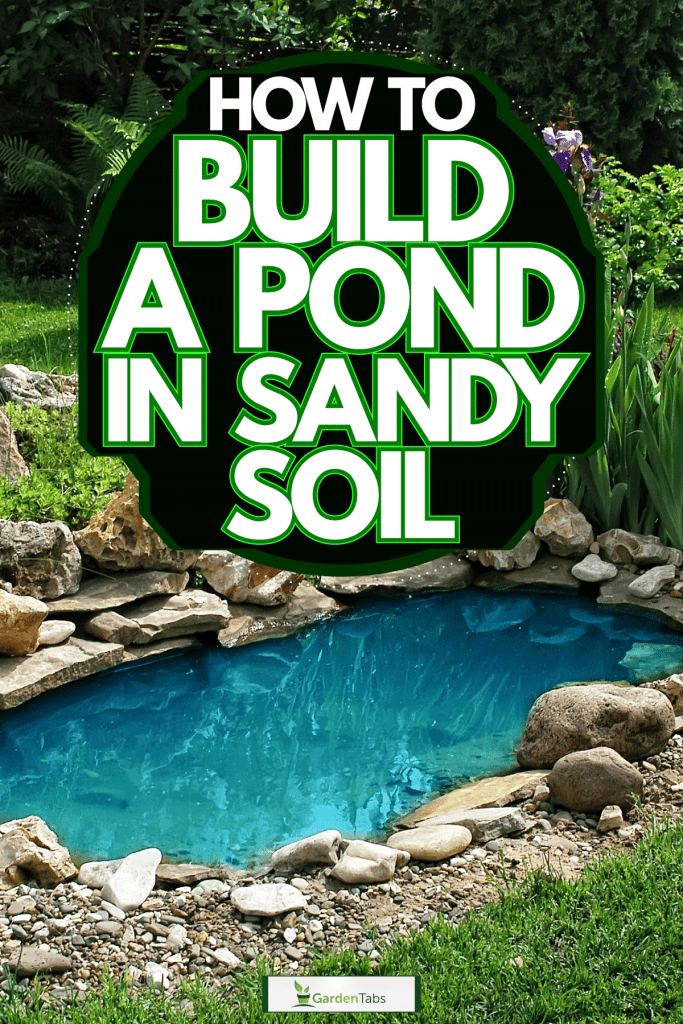
Contents
1. Make a plan and layout for your pond
The first step to creating a pond is to come up with a solid plan and layout. Each pond is specific to the piece of ground you plan to dig it on and the particular use you plan for your pond. That is to say, in addition to the soil type, available space, surrounding trees, and desired pond habitat all play a role.
After the above considerations, you will want to ask yourself the following questions. Do you want a very large pond or a tiny one? Do you plan on digging with hand tools or with an excavator? Where do you plan on putting the dirt as you dig it? Do you want the pond to be habitable to fish and, if so, to what species?
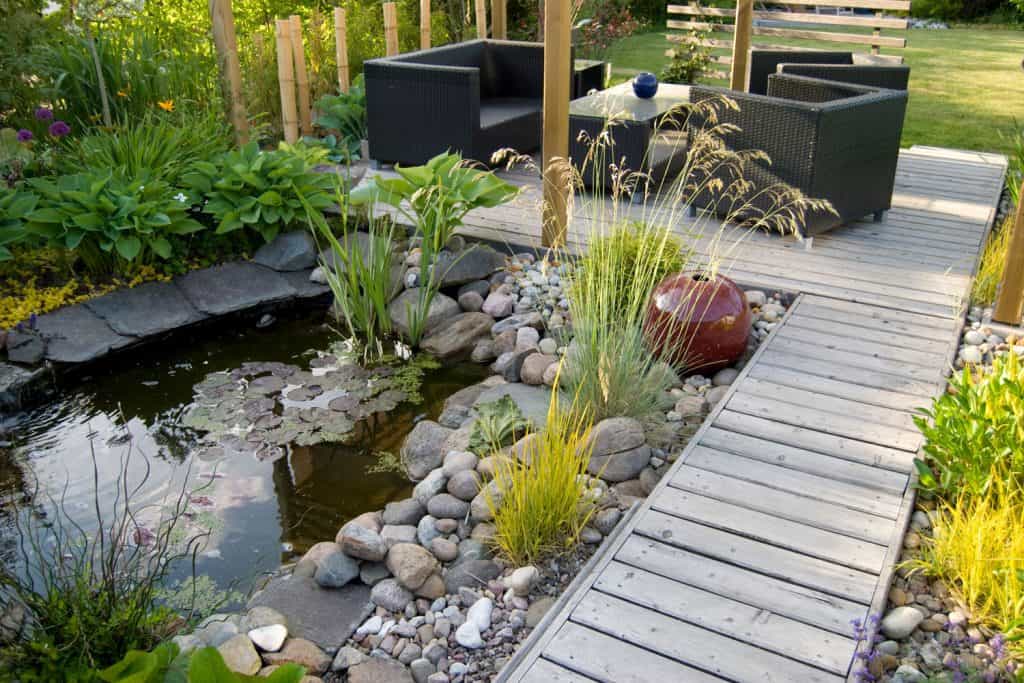
As you come up with these questions, do additional research. For instance, fish and other animal species require the water to stay within a specific temperature range throughout the year. These requirements will then influence how deep you dig the pond.
In addition, make sure to plan for pond access, such as pathways and docks, and local landscaping and existing obstruction like trees, rocks, and buildings. Importantly, you need to decide if you will fill your pond via the water table or if you want to line the bottom of your pond and fill conventionally.
If you plan on lining your pond, you will need to decide which type of liner to use. There are a large number of liner and bottoming options for ponds, including hard plastic liners. We discuss these liner options more in section 3.
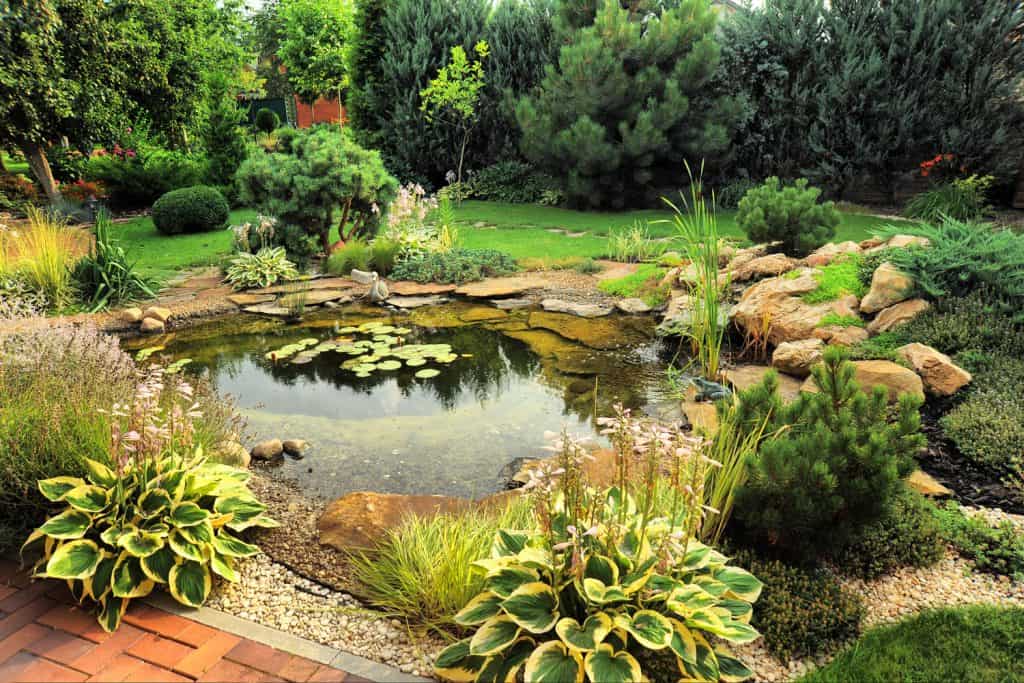
Generally, preformed hard plastic liners only come in certain shapes or sizes. Therefore, it is essential to shop around for what is available before setting your plans in stone. This is because the shape of the liner will dictate the other landscaping features.
As you form your plan, do tons of research on best practices and others' experiences. For larger projects, it is probably very worthwhile to call a professional landscaper to take a look at your project and draw up a bid for you.
Planning Considerations for Sandy Soil
The biggest issue to plan for with sandy soil is the inevitable slumping of soil walls. Generally, this can be accounted for by keeping the slope of your pond gradual. Sources recommend anywhere between a 3:1 and a 5:1 slope.
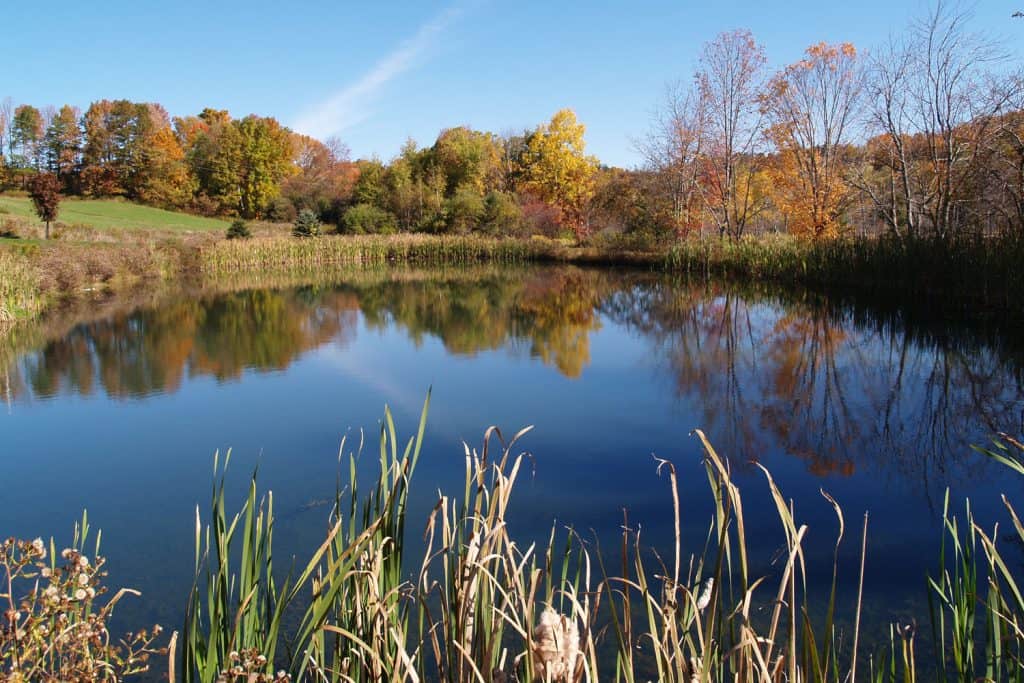
It is wise to test the preferred slope because not all sandy soils are the same. You can dig a test hole by hand or machine where your future pond will go to see what type of slope your sandy soil will tolerate. If the soil actively slumps downhill, then you are probably attempting a slope that is too steep.
You can accommodate a steeper slope by shoring up the walls as you dig. Gravel, concrete blocks, poured concrete, and other support mechanisms are all options.
2. Dig the pond
Now it is time for the digging! Smaller ponds, which are hundreds to one-thousand gallons large, are generally possible to dig with picks and shovels by hand. Larger ponds require excavators and somewhere practical to put the large amount of dirt you plan to remove.
Click here for a shovel on Amazon.
Be sure that all processes and machinery used in the digging process are run by licensed operators or performed by individuals who can handle the hard work of digging.
How deep should a pond be?
How deep the pond should be all depends on the future use of the pond. For a pond that you want to be a healthy habitat for a diverse group of flora and fauna, try to get the average depth of 8-feet or deeper. This depth allows the water to stay cool enough even during the warm summer months and warm enough during the winter for most species.
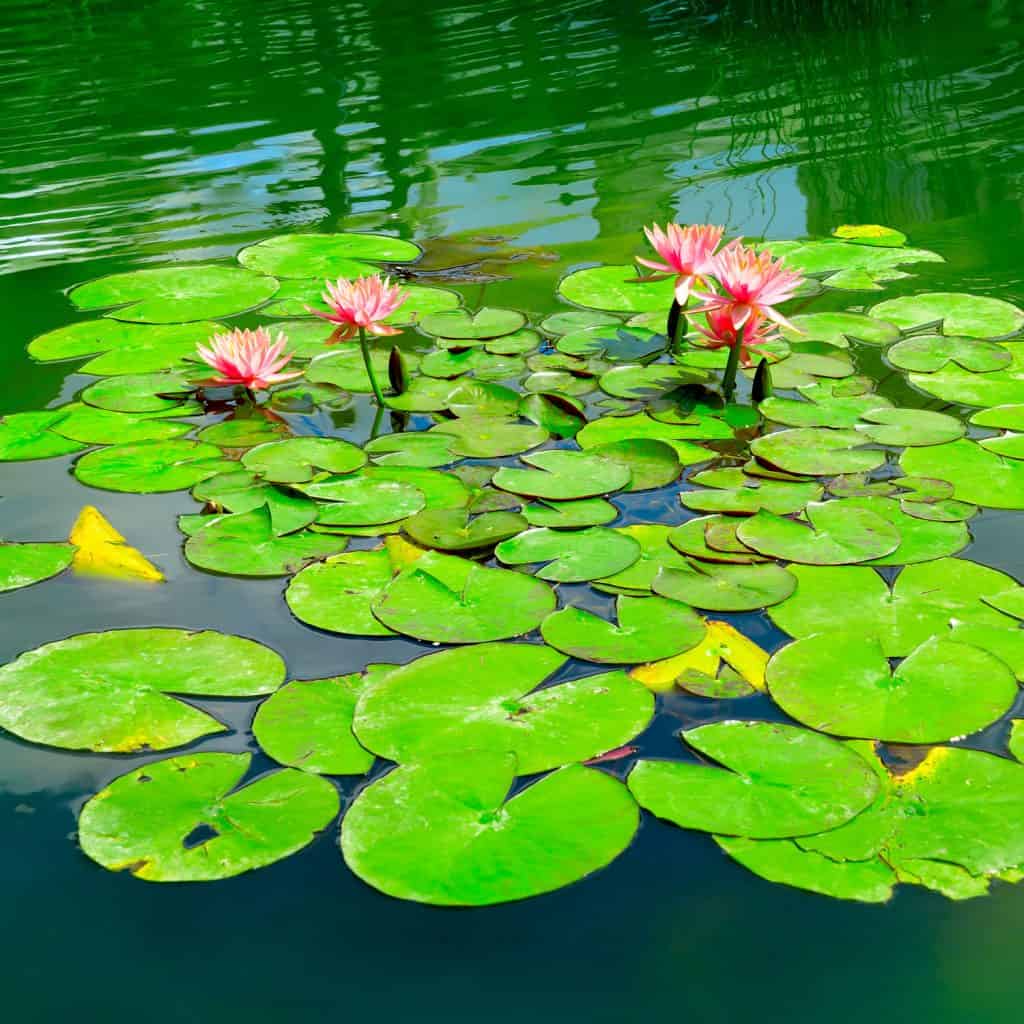
For small backyard ponds, there is no rule about how deep the pond should be. Generally, backyard koi ponds need to be at least three feet deep. However, frog ponds and ornamental ponds can also be much shallower.
3. If needed, add pond liner or wall supports
Once you have dug the pond, it is time to add the liner and wall supports. All ponds that do not rely on the water table to fill generally require some sort of liner. Without a liner, all water you divert into the hole will seep out far too fast for practicality's sake.
Techniques for lining ponds include sealing by compaction, clay blanket, bentonite, chemical additives, and flexible membranes. Other options include concrete, concrete-lined with chicken wire, EPDM, and premade hard plastic liners.

The specifics of which sealant works best for you depend on the size, kind, and local conditions. For larger ponds, it is always worthwhile to consult a local expert on how to line your pond.
This consultation will help you identify best local practices and how large a job building and maintaining your post will actually be.
For sandy soil, you will want to add wall supports to any steep sections of the pond wall. Accomplish this in tandem with the digging process by pouring concrete or building rock retaining walls. For really steep sections and to strengthen your concrete, consider embedding chickenwire into any poured concrete.
How do you seal a sandy pond?
Adding a clay blanket, bentonite, and flexible membranes (such as EMPD) are good options for sealing a sandy pond. However, for small backyard ponds, premade hard plastic liners are likely the best option.
What is the best base for a pond?
There is no "best base" for a pond. All bases come with different considerations and price points. For small ponds, EPDM and hard plastic are likely the most durable and easy to install. For larger ponds, clay blankets and natural compactions are the most economical and efficient choices.
4. Consider adding fish, plants, and aerators
Once the pond is dug and filled, consider adding fish, plants, and other flora and fauna. Often, you can rely on local plants and animals to move into your pond naturally. However, if you are looking for specific fish and plants, buying from a local supplier is necessary.
Click here for a pond aerator from Amazon.
For shallower smaller ponds, adding an electrically powered aerator can be a critical addition. While a healthy plant and animal biome will ensure that your pond stays oxygenated, this environment is not guaranteed.
If the pond fails to stay healthy and oxygenated, it will become anaerobic. This is a problem because anaerobic environments are perfect for bacteria that let off a horrible odor. Further, these ponds are black and icky rather than beautiful and green as is usually preferred.
Should I put sand in the bottom of my pond?
Generally, no, you do not want sand on the bottom of your pond. The sand is hard to manage and provides a place for harmful microbes to live and thrive. While initially, the sand may hark of a tropical oasis, it may soon become dirty and distasteful.
Essentially, going to the trouble of adding sand to the bottom of your pond is generally not worth the effort. Instead, take the advice of experts and let your pond liner stand at the bottom.
Is a pond better in sun or shade?
If you want an extensive array of aquatic plants to thrive, build your pond in the sun. That being said, if you live in a very hot place, you do not want the pond to get overheated. Therefore, a mix of sun and shade is generally an excellent option for a healthy, long-lasting pond.
In Closing
In this post, we covered a general plan of how to build a pond in the sand. As described, there are a few handy tricks for making this process go more smoothly. To conclude, we answered a couple of related questions. Good luck!
For ideas on how to landscape around your pond, read these great Garden Tabs articles:


